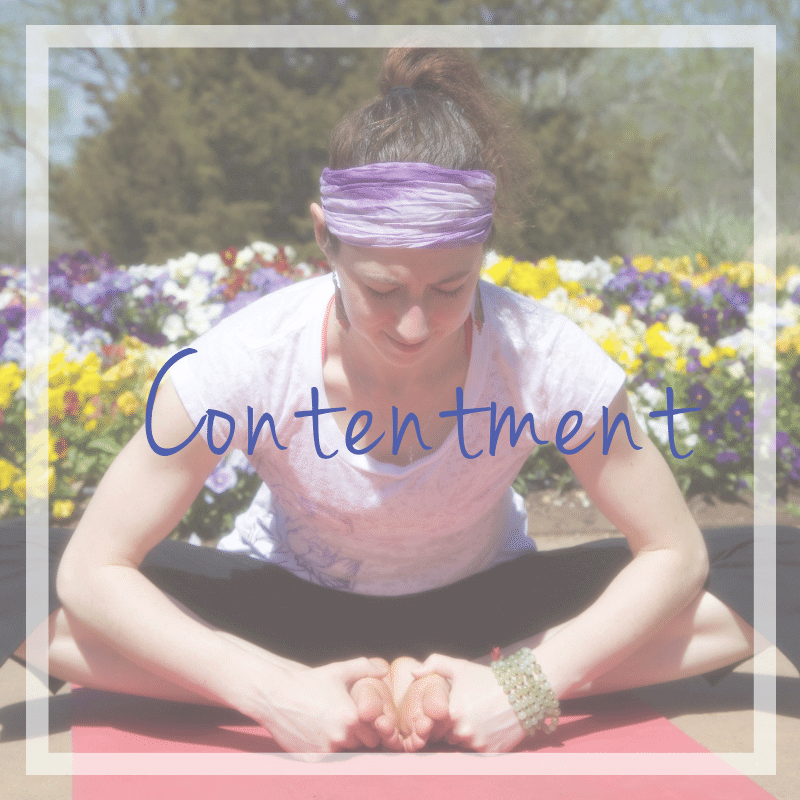The principle of practice in yoga seems obvious–it’s practically in the name.
And yet, most of us need constant reminders that this whole yoga thing–life really–is just that. Practice. Too often, under pressure from “society,” we succumb to the expectation that anything new we begin must be mastered immediately. But that’s not how learning works. Nobody, no matter how smart or physically gifted you are, masters anything in a week. Not even Rome was built in a day.
Practice does not, contrary to popular belief, make things perfect. In fact, practice helps you grow and evolve, but since there is no such thing as perfection, it’s futile to practice for the sole end-goal of achieving perfection. Practice something so that you can grow, learn, and get better at it. And then keep practicing. There will always be something to get better at, some new way to grow, something new to learn. Even if you’re the best in your field.
Practice is hard to embrace because it never ends. If you adopt perfectionism as a guiding principle in your life, the purpose of working on something is to finish it. When you finish something you don’t have to work on it anymore–you can move on to the next project. If, however, you drop perfection as a guiding principle, you let go along with it the idea that anything will ever be “done.” When practice is your guiding principle, nothing is ever done. For most of us, that feels chaotic, uncertain, and icky. But for those who are able to sit in that space contentedly, the pressure for finishing, being perfect, or being the best dissipates. Still put in the work. Do the best you can. Find joy along the way. Let things be as they are. And then, keep trying. Keep showing up. Keep practicing.
Practice in the Yoga Sutra
In the Yoga Sutra, Patanjali tells us that practice “means applying continuous effort toward steadying the mind” (Sutra 1.13). It’s easy to look at that statement and conclude that practicing yoga means always steadying your mind. And while that’s a valid interpretation, the phrase “continuous effort” is vague enough that it can be interpreted in many different ways. Continuous effort means what it means to you. To some people, that means you have to be constantly practicing yoga. To others that means you need to be practicing yoga consistently, say 3 days a week. For others, continuous effort means that if you’re paying attention to steadying your mind generally once a week, that qualifies. You get to choose how you apply continuous effort to your pursuits in an effort to get better at life.
Let me give you some examples from my own life. In high school, I played golf. During the season I practiced almost every day. In the off-season, I maybe made it to the driving range once a week. Maybe. I wouldn’t say that I was super great at the whole “continuous effort” piece of my practice ritual and my skill-level appropriately reflected that nonchalant approach. If I would have practiced more, maybe I could have been better. However, I still enjoy golf to this day. I play a handful of times a year. If I practiced more consistently, I could probably be pretty good. But I don’t really care about being really good at golf. I golf for the enjoyment of it, for the social aspect, for the excuse to be out in nature, for the opportunity to play against myself. With all that said, I’ve been playing golf since I was about seven years old. I’d say you could make the argument that I’ve applied a variation of “continuous effort” to my pursuit of golf over the course of my life. On a micro, day-to-day scale, it doesn’t look like I’m holding up my end of the practice bargain. But over the long-run, the fact that each season I still find a way to get on the course means that I’m maintaining my “practice” in the most rudimentary sense of the phrase “continuous effort.”
When it comes to yoga, I practice every day and I’ve been doing this for well over 10 years. That does not mean that I practice asana every day. Or even that I meditate every day. Practicing yoga, to me, means that I’m paying attention to my breath, my movement, my body, my mind, my reactions, and my decisions every single day. The contents of my practice look different every day, but I’ve committed myself wholeheartedly to living the life of a yogi and in so doing, I apply “continuous effort” in the most extreme interpretation of that phrase.
I love the following sutra because it speaks to the individuality of our personalities and our willingness to show up for practice.
Sutra 1.22: For those who have faith and put in the effort, there are three ways to practice.
-
Slow
-
Moderate
-
Extreme
You get to choose how “continuous” your effort is. But in making that choice you also have to understand that the fruits of your actions (which as yogis we should be letting go of anyway…) will return to you in due time according to your commitment. Those who practice slow will take longer to master what they’re practicing than those who practice in the extreme. At the same time, those who practice in the extreme risk burn-out, injury, even death, by undertaking such a course of action. So you have to find what works for you. And, you have to accept that the results of your practice may take longer to materialize than you (or society) would like. Adopting a yogic mindset around practice means adjusting your expectations and getting really clear on why (and what) you’re practicing in the first place.
Move beyond perfectionism
Just because you’re practicing, doesn’t automatically mean you will become a master, or even good, at what you’re practicing. But that doesn’t mean you’re not learning or improving along the way. For some reason, many people have this expectation that whatever they choose to practice, they are practicing for the sole purpose of becoming the best. But we all know how rare it is to be the best. If everyone became masters at their craft, there would be no use for any major sporting league. We’d all be stars.
Practice isn’t for the sake of mastery. Practice is for the sake of growth. You can practice something your entire life and still be objectively horrible at it when you’re on your death bed. Yet, you will still have grown immeasurably along the way and learned a ton. That personal growth and learning is worthwhile. It becomes diminished when we let the expectation of mastery and perfection overshadow growth and learning.
Today, I see people buckle under the pressure of perfection every day in the smallest of ways. I see yoga teachers feel like they need to be perfect at social media in order to have successful yoga businesses and then get frustrated when they can’t “get it right.” Turns out social media marketing takes a lot of time, intention, and, you guessed it, practice, to pay off. There needs to be continuous effort over a long period of time to see results. Too many people give up after a couple months. I know this because I’ve done it myself.
I see meditators give up on meditation after a few weeks because they don’t feel like they can ever quiet the mind. Meditation as a process and practice is a bit more complicated and nuanced and it’s sometimes hard to see tangible results right away. But that doesn’t mean it’s not working or that you’re not progressing. You can’t just meditate for a month and then suddenly become enlightened (at least not most people). Meditate for a few lifetimes and then see where you’re at.
A practice challenge
If you want to get better at integrating the principle of practice into your life, here’s a practice challenge for you to try.
Step 1: Pick something to practice. Some ideas:
- A specific yoga posture
- Meditation
- Drawing
- Cooking
- Knitting
- Writing
Keep it simple so that you can clearly measure your outcomes. I’m resisting using the word results because this isn’t about the “end-game,” it’s about the process and the journey along the way.
Step 2: Spend some time getting clear on why you’re practicing. What do you want to get out of your practice? Do you want to be the next yoga master? Do you want to be able to knit a complicated shawl pattern even though you’ve never knit a day before in your life(🙋🏻♀️)? Do you want to find a hobby? Do you want to get to know your body better? Why are you practicing? This reflection is essential. Do not skip spending time reflecting on why you’re practicing in the first place. Otherwise you’ll fall in the perfection trap.
Step 3: Set aside time each day to make sure you put in the work. How long are you going to commit to practicing each day? Five minutes of meditation, 30 minutes of yoga asana, 10 minutes of knitting, etc. I recommend starting small. If you’ve never meditated before, pick 1 minute. If you have an established practice that you’re looking forward to recommitting to, maybe you go with 20 minutes. Start with a 1-week challenge. Keep it short. If 1 week is too much, start with 3 days. After 1 week if you want to keep going, extend challenge to 1 month.
Once you’re clear on how much time you’re going to spend each day, put it in your calendar so that you know when specifically each day you’re going to do it. If you don’t do this, chances are the days will slip away from you and you’ll get frustrated and disappointed in yourself for not making the time to practice. A huge part of “continuous effort” stands on continuous planning.
Side-note. I have heard so many people tell me they’re not planners and they don’t work that way. I get it. Planning is unsexy. I understand that many people prefer to operate in a go-with-the-flow kind of way. But you still need to plan. If you’re not a calendar person, draw a chart or something to keep track of your progress. Find a creative, go-with-the-flow way to implement your practice every single day. What inevitably happens is that the flow of your day precludes you from practicing and then, a week later, you’re upset and confused about why you’re having trouble practicing. I’ll tell you why. You’re not planning. And in resisting planning, you’re resisting practicing. There’s something deeper going on here. Go back to step 2 and examine your motivations for practicing. If you’re motivated for the right reasons you’ll put in the work, including planning when that work is going to happen.
Step 4: Practice. Part of practice includes recording and reflecting on your practice. If you just practice every day but you don’t pause to notice what you actually did–how you feel, the progress you made, etc.–then you’re not practicing, you’re doing. There’s a difference. Many of us go about our days doing. We’re expert doers. Doers get things done. Maybe you check a lot of things off you list and feel good about it. Maybe you are uber-productive and you relish in being on top of things. But then something funny happens. You get bored. You start feeling uninspired. Even though you’re doing a lot and objectively “busy.” You can do a lot, but for what? For the purpose of getting things done and crossing things off a list? When you’re practicing, you have to be examining the progress you’re making along the way. So take some time to not only celebrate that you made the time to practice, but acknowledge what you learned, what went well, and what didn’t so that you can start from that place tomorrow. This is when growth really starts to happen. This is also called “deliberate practice,” and it’s what guides growth.
Step 5: Celebrate, have fun, and let go. At the end of your challenge check in and see where you’re at. Celebrate all the ways in which you’ve grown, especially the small wins. Reflect on how much fun you had each day. Acknowledge the habit pattern you’re building and the mindset shifts that have come about as you’ve dedicated yourself to practice. Look out for the subtle changes that maybe have nothing to do with your practice directly. Maybe, by setting aside 10 minutes a day to knit, you’ve noticed a marked decrease in your stress levels simply because you’re not spending that time doom-scrolling through Facebook. Who cares how good you are at knitting or how far you got in your project. You feel better! Win!
Perhaps most yogic of all, let go of the results. Acknowledge them, celebrate them, and then let them go. Be humble. Get curious. What else can you learn? How much more can you grow? And then, begin again. Because that’s what practice is. A continuous effort toward learning and growth for the purpose of learning and growing (and maybe some other side benefits along the way).





